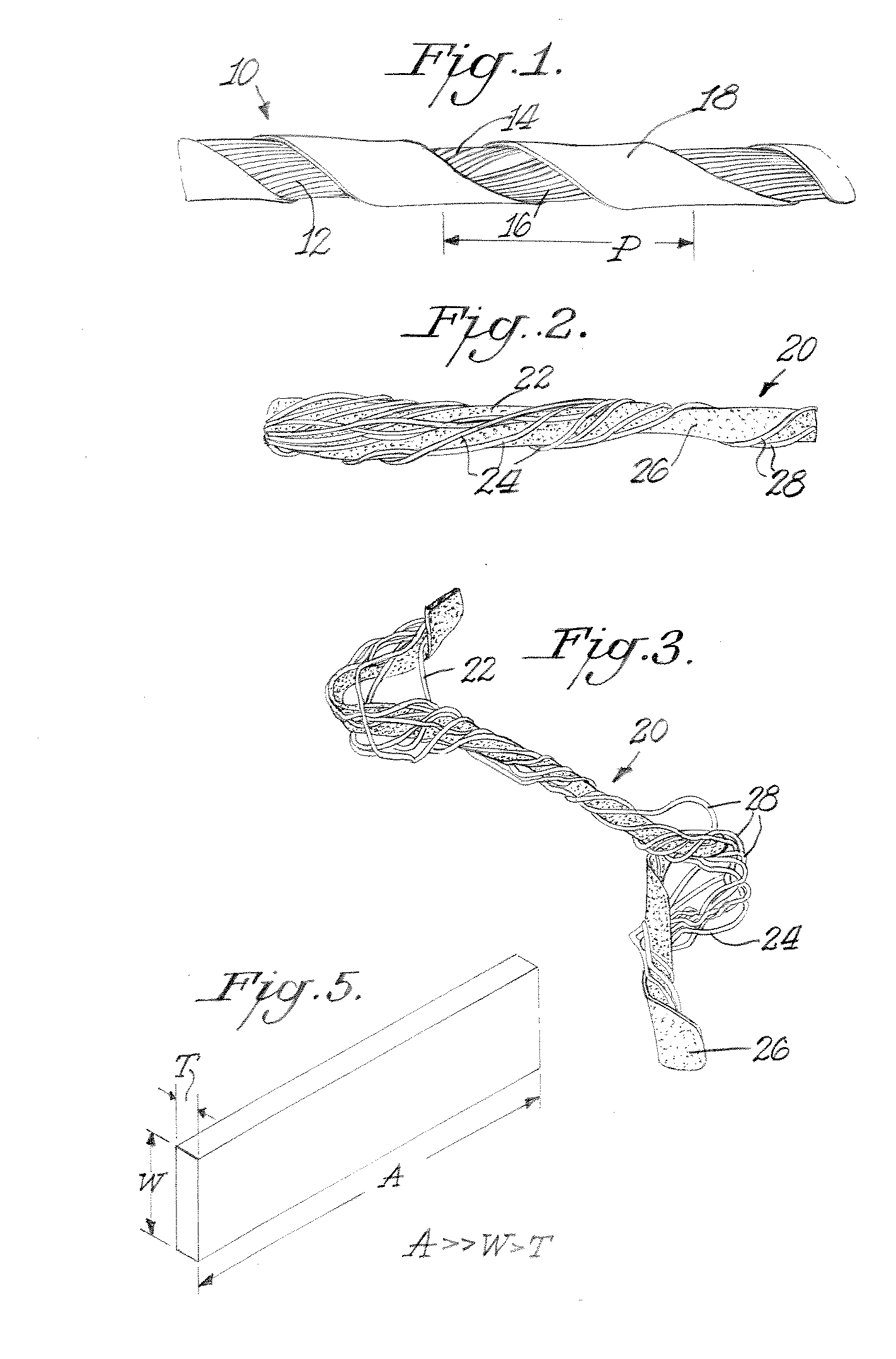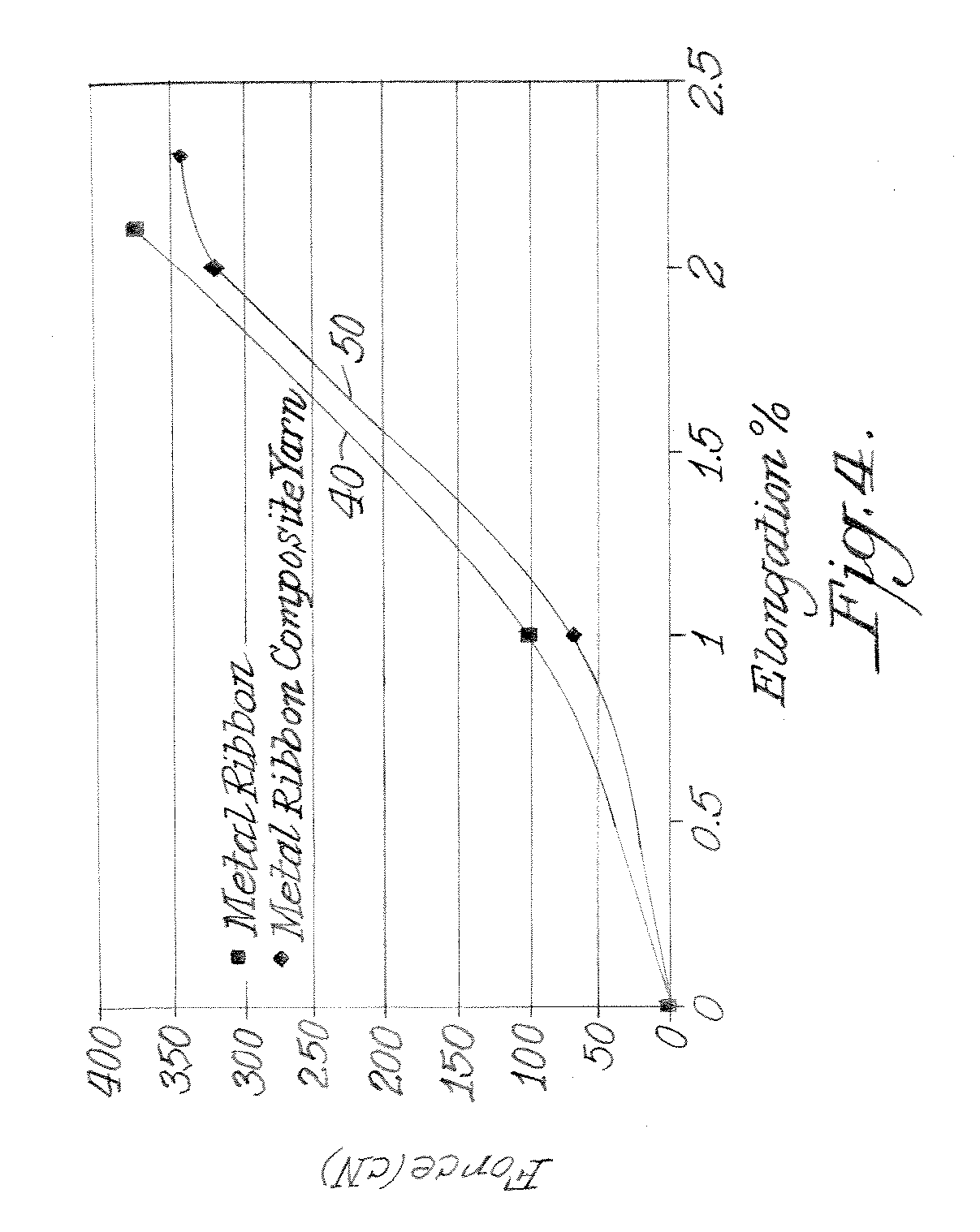Energy active composite yarn, methods for making the same, and articles incorporating the same
a composite yarn and energy-active technology, applied in the field of energy-active textile yarns, can solve the problems of difficult handling, short planar fibers that are limited, and the current process for integrating electronic functionality on such a curved surface is complex
- Summary
- Abstract
- Description
- Claims
- Application Information
AI Technical Summary
Problems solved by technology
Method used
Image
Examples
example
[0089] A specific embodiment of the present invention will now be described by way of the following Example, which is for the purpose of illustration only.
[0090] A composite yarn was made by wrapping a 78 decitex (dtex) elastic core made of Lycra® spandex yarn with a flat metal ribbon having a thickness (T) of 40 μm and a width (W) of 210 μm obtained from Rea Magnet Wire Company, Inc., USA. The Lycra® spandex elastic core yarn was first drafted to a value of 3.6 times (i.e., N=3.6) and then wrapped at 250 turns / meter (turns of flat ribbon per meter of drafted Lycra® spandex yarn) with a single length of the flat metal ribbon twisted in the “S” direction. An electrically conductive composite yarn having a planar element was produced. The flat metal ribbon covering was done using a standard process on an I.C.B.T. machine, model G307.
[0091] The stress-strain properties of the metal ribbon (40) alone and of the composite yarn (50) of this Example are shown in FIG. 4. The composite yar...
PUM
| Property | Measurement | Unit |
|---|---|---|
| Length | aaaaa | aaaaa |
| Electrical conductivity | aaaaa | aaaaa |
| Elasticity | aaaaa | aaaaa |
Abstract
Description
Claims
Application Information
 Login to View More
Login to View More - R&D
- Intellectual Property
- Life Sciences
- Materials
- Tech Scout
- Unparalleled Data Quality
- Higher Quality Content
- 60% Fewer Hallucinations
Browse by: Latest US Patents, China's latest patents, Technical Efficacy Thesaurus, Application Domain, Technology Topic, Popular Technical Reports.
© 2025 PatSnap. All rights reserved.Legal|Privacy policy|Modern Slavery Act Transparency Statement|Sitemap|About US| Contact US: help@patsnap.com


